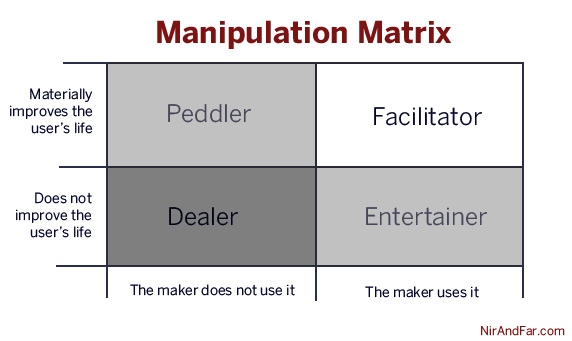|
|
|
Archive for July, 2012
Tuesday, July 10th, 2012
 Whether your team is virtual or on-site drugging them with oxytocin will keep productivity humming, drive innovation, boost retention and put your organization on the ‘best places to work’ list. Whether your team is virtual or on-site drugging them with oxytocin will keep productivity humming, drive innovation, boost retention and put your organization on the ‘best places to work’ list.
The upside of oxytocin is that it’s totally legal; the downside is that it’s directly tied to your management/leadership skills.
“Whether it’s online or in an office, the leader’s role is to empower individuals to be more successful,” says Paul Zak, a professor of economics and director of the Center for Neuroeconomics Studies at Claremont Graduate University in Claremont, Calif. “If you keep making me successful, I’ll want to keep working for you.”
That’s because oxytocin is a neurochemical produced by the brain in response to certain stimuli that bosses like Tony Hsieh are experts at keeping it flowing.
The economist’s studies tell him that oxytocin is produced in high-performing workplaces. “The classic way to get people to do what you want is fear, but people acclimate to that,” he says. “If you want to keep people on task all the time, you want oxytocin-producing situations.”
Increasing oxytocin is a byproduct of the traits and actions evangelized by management, leadership and corporate culture experts not to mention 110% of the general workforce.
The leadership traits he has identified to produce this include praise, given unexpectedly and in public; transparency in identifying tasks and setting goals; authenticity; effective delegation of work; empathy to others’ situations; anticipation of challenges; and autonomy.
Not exactly rocket science; in fact, you need to be from another planet not to have heard of the value of these traits.
If you don’t already, start practicing them; if you do practice them look for ways to increase/enhance your actions.
Be the drug dealer your people will love.
Wikimedia image credit: Edgar181
Posted in Ducks In A Row, Personal Growth, Retention | No Comments »
Monday, July 9th, 2012
 Do you ever see titles like 5 Ways To Commit CEO Career Suicide, but skip the article because you aren’t a CEO and have no intention of ever being one? Do you ever see titles like 5 Ways To Commit CEO Career Suicide, but skip the article because you aren’t a CEO and have no intention of ever being one?
You may want to rethink that.
Frequently the advice is just as applicable to other levels including non-management.
The five behaviors mentioned are
- naiveté,
- unbridled optimism,
- arrogance,
- fear, and
- disconnect.
As the old saying goes, what’s sauce for the goose is sauce for the gander, too.
Model any of them, let alone more than one, and you are just as likely to lose your job whether you’re at the top of the org chart or the very bottom.
Flickr image credit: Rennett Stowe
Posted in Personal Growth | No Comments »
Sunday, July 8th, 2012
 I love words. They are one of my very favorite things, so I thought it would be interesting so see what others thought of them. I love words. They are one of my very favorite things, so I thought it would be interesting so see what others thought of them.
Edward Thorndike believes words are for the long term, “Colors fade, temples crumble, empires fall, but wise words endure.” Sadly, it’s not just the wise ones that last through time.
Rudyard Kipling thinks they are addictive, “Words are, of course, the most powerful drug used by mankind.” (I agree.)
Long before I wrote this, Oliver Wendell Holmes said, “A word is not a crystal, transparent and unchanged; it is the skin of a living thought, and may vary greatly in color and content according to the circumstances and the time in which it is used.”
Americans point proudly to the words contained in the Declaration of Independence and Bill of Rights, but as Ralph Ellison reminds us, “If the word has the potency to revive and make us free, it has also the power to bind, imprison and destroy.”
Philip K. Dick explains that further, “The basic tool for the manipulation of reality is the manipulation of words. If you can control the meaning of words, you can control the people who must use the words.” (Manipulation was our focus Friday.)
Johann Wolfgang von Goethe hit the nail on the head when he said, “When ideas fail, words come in very handy.” Just ask any politician, parent or, for that matter entrepreneur.
Common wisdom, AKA anonymous, offers critical advice that is too often ignored, “Don’t use a big word where a diminutive one will suffice.”
Finally, smart people, as well as the wise, keep Adlai Stevenson’s words firmly in mind every time they open their mouths to speak, “Man does not live by words alone, despite the fact that sometimes he has to eat them.” Obviously politicians are neither smart nor wise.
Flickr image credit: AuthenticEccentric
Posted in Quotable Quotes | No Comments »
Saturday, July 7th, 2012
 The links I’m sharing today are meant to be taken personally. They are about you and others in your world, so you may want to share them. The links I’m sharing today are meant to be taken personally. They are about you and others in your world, so you may want to share them.
A couple of weeks ago I pointed you to a discussion that HBS professor Jim Heskett had initiated questioning the 24/7 style of today’s work. The forum is closed and Heskett has summarized the results based on comments that are well worth reading.
“There is a lot wrong with the way we work… (…) But ultimately the primary culprit is us.”
Following that came an essay on busyness to which I really related. Busy seems to be the new black, but you may want to consider varying your wardrobe.
They’re busy because of their own ambition or drive or anxiety, because they’re addicted to busyness and dread what they might have to face in its absence.
Now take a look at why living optimistically (not touchy-feely everything is wonderful) has real health benefits and the follow-up real-world example.
“…optimism is not about being positive so much as it is about being motivated and persistent.”
Years ago I wrote Being “Special” Can Ruin Your Children’s Lives and then watched as Millennials graduated college and entered the workforce with no clue that there was more to it than showing up and trying. In a high school commencement speech the speaker told students that they were neither special nor exceptional, but that did not change their value (you can see the entire speech here).
I wonder if there is any room for the ordinary any more, for the child or teenager — or adult —…who will be a good citizen but won’t set the world on fire.
— we have of late, we Americans, to our detriment, come to love accolades more than genuine achievement,” he told the students and parents. “We have come to see them as the point — and we’re happy to compromise standards, or ignore reality, if we suspect that’s the quickest way, or only way, to have something to put on the mantelpiece, something to pose with, crow about, something with which to leverage ourselves into a better spot on the social totem pole.”
Personally, I believe there is not only plenty of room, but also great need.
We are of enormous value in our own world as well as the world at large.
Flickr image credit: pedroelcarvalho
Posted in Expand Your Mind | No Comments »
Friday, July 6th, 2012
A Friday series exploring Startups and the people who make them go. Read all If the Shoe Fits posts here
 Nir Eyal is a guy who has been there and done that when it comes to entrepreneurial efforts. Nir Eyal is a guy who has been there and done that when it comes to entrepreneurial efforts.
What caught my eye first were his thoughts on manipulation (similar to my own), but what really grabbed me was his view on its morality, especially the morality of creating addictive products.
Eyal provides a “Manipulation Matrix” that requires you to respond to just two questions.
“Will I use the product myself?” and second, “Will the product help users materially improve their lives?”
 Whether you’ve started a company, work for a startup or are thinking about doing either, answer the questions, find yourself on the Matrix and then read Eyal’s descriptions of each one. Whether you’ve started a company, work for a startup or are thinking about doing either, answer the questions, find yourself on the Matrix and then read Eyal’s descriptions of each one.
And if you run or work for an already going concern or even a large corporation the questions are still worth answering.
It’s always useful to know if your work and moral code match.
If not, you may want to change one of them.
Option Sanity™ was designed for Facilitators.
Come visit Option Sanity for an easy-to-understand, simple-to-implement stock allocation system. It’s so easy a CEO can do it.
Warning.
Do not attempt to use Option Sanity™ without a strong commitment to business planning, financial controls, honesty, ethics, and “doing the right thing.”
Use only as directed.
Users of Option Sanity may experience sudden increases in team cohesion and worker satisfaction. In cases where team productivity, retention and company success is greater than typical, expect media interest and invitations as keynote speaker.
Flickr image credit: HikingArtist and NirAndFar
Posted in Entrepreneurs, If the Shoe Fits | No Comments »
Thursday, July 5th, 2012
 To incubate or not to incubate is the burning question these days. To incubate or not to incubate is the burning question these days.
According to much of the media, being accepted into an incubator not only is the best way to go and not joining one is tantamount to setting yourself up to fail.
All of which is a bunch of hooey—even when it’s a top tier incubator.
Since 2005, Y Combinator has funded 460 startups with only a handful of big wins. The rest have faded away, been acquired quickly without growing out of a feature company, or continue to hang on as zombie companies, which are not dying, but not really doing anything either.
One size does not fit all, which is why labels now read “one size fits most.”
But when it comes to incubators the label should read “one size fits some.”
Before you even consider an incubator take a hard look at the product/service your startup envisions. If it’s not a fast build, fast traction, fast-to-profit concept an incubator probably isn’t a good idea, because those early investors are looking for quick returns or they’re on to the next thing.
As to the camaraderie, people to bounce ideas off of and other benefits you can find many of them at the nearest coffee shop or café.
You can put your own group of entrepreneurs together and take turns inviting investors and other gurus to speak. Also, take turns researching questions of benefit to all and discuss the answers. Brainstorm thorny problems and share openly.
Do it in person and form a group at LinkedIn, Google+ or wherever; keep a Skype chat group open for instant access.
You know the various technologies far better than I, so use what works for the group.
And even if you are the one who puts it together don’t get the idea that it’s “yours.”
If it’s truly successful it will take on a life of its own with people joining, contributing, dropping out and returning, which is something you can take quiet pride in.
SUBMIT YOUR STORY
Be the Thursday feature – Entrepreneurs: [your company name]
Share the story of your startup today.
Send it along with your contact information and I’ll be in touch.
Questions? Email or call me at 360.335.8054 Pacific time.
Flickr image credit: Dave L
http://techli.com/2012/06/how-incubators-hurt-startups/
Posted in Entrepreneurs | No Comments »
Wednesday, July 4th, 2012



Have a (safe) wonderful holiday!
Flickr image credits: Jim Capaldi, Kat Kellner and Ed Yourdon
Posted in Just For Fun | No Comments »
Tuesday, July 3rd, 2012
 An article talking about better ways to train employees made me chuckle; not because the ideas were bad, but because it focused on the idea that adults are trainable. An article talking about better ways to train employees made me chuckle; not because the ideas were bad, but because it focused on the idea that adults are trainable.
They aren’t.
Decades ago I read an article about training by a respected expert. His (her?) name is long gone from my memory, but not the core thought, which was that training ended with the toilet and from that point on humans learned.
Of course, that meant they had to be taught.
And while you might think it’s the so-called trainee’s responsibility to learn, whether the material is interesting, boring or non-existent, that expectation is likely to cost you raises, bonuses and promotions.
The bottom line is that along with all your other bossly functions you must also be a teacher; not just a teacher but a great teacher, because the kind of teacher you are is an absolute reflection of the kind of boss you are.
- Interesting: presented in a way to stimulate curiosity and create a desire to master it = committed, motivated, builder of teams and grower of people.
- Boring: dull, no-energy presentation that acts more like a soporific or worse an insult to intelligence = uncaring, passive, uninterested.
- Non-existent: the sink or swim approach = lazy and arrogant.
As always, it’s your choice.
Flickr image credit: Dan Ox
Posted in Ducks In A Row | No Comments »
Monday, July 2nd, 2012
 Can you believe the year is half over? I can’t, but it must be since I’m getting ready to watch fireworks. And speaking of fireworks, here is the July Leadership Development Carnival with fireworks of its own if you’re the wrong kind of boss. Can you believe the year is half over? I can’t, but it must be since I’m getting ready to watch fireworks. And speaking of fireworks, here is the July Leadership Development Carnival with fireworks of its own if you’re the wrong kind of boss.
Part One:
From Wayne Turmel, The Connected Manager blog, here’s Why WebEx is like Soylent Green.
Lynn Dessert, from Elephants at Work, gives us Leadership Agility: How to Improve it. “Knowing what gets in the way of leadership agility is the easy part, improving it proves to be more difficult.”
Art Petty, from his Management Excellence blog, presents Just One Thing: Always Add Clarity to Challenge.
Here’s Bernd Geropp, from More Leadership, Less Management, with Micromanagers and the e-mail trap. “Many entrepreneurs and senior managers tend to work around the clock, but take too little time for the real leadership tasks.”
Jesse Lyn Stoner closes out our first sement with a bang with A Big Goal Is Not the Same As a Vision, from her Jesse Lyn Stoner blog. “It’s easy to confuse a really big goal with a vision, but the difference is important. Here’s how to tell.”
Part Two:
Chris Edmonds presents Build a Culture of Accountability, from his Driving Results Through Culture blog. Chris tells us how to set clear goals and citizenship standards then hold all staff accountable for both.
Anne Perschel, from From Germane Insights, presents Dear Leader: Do We Have a Deal?
Adi Gaskell, from Process Excellence Network presents Seven habits of Highly Inefficient People.
“A light-hearted look at some habits you don’t want to mimic at work.”
Mary Jo Asmus, from Mary Jo Asmus presents Stand Up. “Leading others sometimes means taking a stand for what’s right, even when there is risk involved. The best leaders have the courage to stand up in order to stand out.”
Jane Perdue gives us Effective leaders are tough AND tender, from her LeadBIG blog. “Combining empathy with accountability is a unique skill set no leader should be without.”
Part Three:
Tanmay Vora, from his QAspire Blog presents Leading Projects: Balancing Rational with Emotion.
“When leading projects and building an organization, leaders have to balance rational with emotion, processes with empathy and practices with people.”
Jim Taggart, from Changing Winds, presents The 6 Inner Leadership Selves. “In the post I talk about different ways leadership can be practiced. I provide contrasting questions for each of the six elements I present. These questions are aimed at fostering personal reflection by the reader.”
Mary Ila Ward from Horizon Point Consulting submits Pot, Meet Kettle. “Many people seek to model the behaviors of their leaders. But are you modeling behaviors that you want others to demonstrate? This piece highlights how the behaviors we dislike in others are often ones we demonstrate ourselves, and seeks to outlines ways to overcoming derailing workplace behaviors.”
Linda Fisher Thornton from her Leading in Context Blog presents Leading for Ethical Performance. “Senior leaders need to work together as a team to create an organization where ethical leadership is rewarded and unethical leadership is quickly corrected.”
Margy Stoner (of Weaving Influence LLC) submits on behalf of Wendy Appel, from her Wendy Appel: The Enneagram Source blog: What it Means for Leaders to Show Up. “In this post, Wendy Appel, author of “InsideOut Enneagram” discusses the meaning of the words “show up.” She writes, “When we show up and are present, we can listen to what has heart and meaning, tell the truth without blame or judgment and be open to outcome, not attached to outcome.”
Part Four:
Lisa Kohn of Chatsworth Consulting Group presents 6 steps to avoiding analysis paralysis on The Thoughtful Leaders Blog, where she talks about the challenges of balancing between planning and doing. Submitted by Melody Bridgewater.
Wally Bock, from his Three Star Leadership Blog presents The People-Centered Workplace. “Too much management thinking tries to turn people into something else.There’s a better way.”
Randy Conley, from his LeadingWithTrust blog presents Father’s Day Special: Five Leadership Lessons From Being a Dad. “Lessons on being a better leader are all around us if we’re only willing to pay attention. In honor of Father’s Day a few weeks ago, I reflected on just a few of the many lessons I’ve learned from being a father and how they’ve helped me as a leader.”
Nick McCormick from Joe and Wanda on Management presents Continuous Learning.
The Grand Finale:
Miki Saxon from MAPping Company Success presents What is Diversity? “What constitutes true diversity? Is there more to it than can be seen? Is there an accurate indicator for you as a leader that you are actually achieving it?”
David Burkus from LDRLB presents a guest post by Betty Bailey: Going off the Rails.
Jennifer V. Miller from The People Equation presents Leading a Meeting? How to Avoid a Snooze-Fest. All leaders run meetings, but not all of them do it well. Jennifer V. Miller, a former corporate trainer, shares tips for managing group dynamics that work equally well for workshops or meetings. Bonus content – she’s offering a free reference sheet called “6 Tips for Getting People Involved”.
Guy Farmer from Unconventional Training presents How to Keep Your Employees Motivated.
“Proactive leaders understand that motivating employees is about helping them feel great about themselves and doing meaningful work.”
Mark Bennett from TalentedApps presents Leadership and Complexity. “One of a leader’s job is to reduce complexity. How to do that isn’t very simple.”
Image credit: Great Leadership
Part One:
From Wayne Turmel, The Connected Manager blog, here’s Why WebEx is like Soylent Green.
Lynn Dessert, from Elephants at Work, gives us Leadership Agility: How to Improve it. “Knowing what gets in the way of leadership agility is the easy part, improving it proves to be more difficult.”
Art Petty, from his Management Excellence blog, presents Just One Thing: Always Add Clarity to Challenge.
Here’s Bernd Geropp, from More Leadership, Less Management, with Micromanagers and the e-mail trap. “Many entrepreneurs and senior managers tend to work around the clock, but take too little time for the real leadership tasks.”
Jesse Lyn Stoner closes out our first sement with a bang with A Big Goal Is Not the Same As a Vision, from her Jesse Lyn Stoner blog. “It’s easy to confuse a really big goal with a vision, but the difference is important. Here’s how to tell”.
Part Two:
Chris Edmonds presents Build a Culture of Accountability, from his Driving Results Through Culture blog. Chris tells us how to set clear goals and citizenship standards then hold all staff accountable for both.
Anne Perschel, from From Germane Insights, presents Dear Leader: Do We Have a Deal?
Adi Gaskell, from Process Excellence Network presents Seven habits of Highly Inefficient People.
“A light-hearted look at some habits you don’t want to mimic at work.”
Mary Jo Asmus, from Mary Jo Asmus presents Stand Up. “Leading others sometimes means taking a stand for what’s right, even when there is risk involved. The best leaders have the courage to stand up in order to stand out.”
Jane Perdue gives us Effective leaders are tough AND tender, from her LeadBIG blog. “Combining empathy with accountability is a unique skill set no leader should be without.”
Part Three:
Tanmay Vora, from his QAspire Blog presents Leading Projects: Balancing Rational with Emotion.
“When leading projects and building an organization, leaders have to balance rational with emotion, processes with empathy and practices with people.”
Jim Taggart, from Changing Winds, presents The 6 Inner Leadership Selves. “In the post I talk about different ways leadership can be practiced. I provide contrasting questions for each of the six elements I present. These questions are aimed at fostering personal reflection by the reader.”
Mary Ila Ward from Horizon Point Consulting submits Pot, Meet Kettle. “Many people seek to model the behaviors of their leaders. But are you modeling behaviors that you want others to demonstrate? This piece highlights how the behaviors we dislike in others are often ones we demonstrate ourselves, and seeks to outlines ways to overcoming derailing workplace behaviors.”
Linda Fisher Thornton from her Leading in Context Blog presents Leading for Ethical Performance. “Senior leaders need to work together as a team to create an organization where ethical leadership is rewarded and unethical leadership is quickly corrected.”
Margy Stoner (of Weaving Influence LLC) submits on behalf of Wendy Appel, from her Wendy Appel: The Enneagram Source blog: What it Means for Leaders to Show Up. “In this post, Wendy Appel, author of “InsideOut Enneagram” discusses the meaning of the words “show up.” She writes, “When we show up and are present, we can listen to what has heart and meaning, tell the truth without blame or judgment and be open to outcome, not attached to outcome.”
Part Four:
Lisa Kohn of Chatsworth Consulting Group presents 6 steps to avoiding analysis paralysis on The Thoughtful Leaders Blog, where she talks about the challenges of balancing between planning and doing. Submitted by Melody Bridgewater.
Wally Bock, from his Three Star Leadership Blog presents The People-Centered Workplace. “Too much management thinking tries to turn people into something else.There’s a better way.”
Randy Conley, from his LeadingWithTrust blog presents Father’s Day Special: Five Leadership Lessons From Being a Dad. “Lessons on being a better leader are all around us if we’re only willing to pay attention. In honor of Father’s Day a few weeks ago, I reflected on just a few of the many lessons I’ve learned from being a father and how they’ve helped me as a leader.”
Nick McCormick from Joe and Wanda on Management presents Continuous Learning.
The Grand Finale:
Miki Saxon from MAPping Company Success presents What is Diversity? “What constitutes true diversity? Is there more to it than can be seen? Is there an accurate indicator for you as a leader that you are actually achieving it?”
David Burkus from LDRLB presents a guest post by Betty Bailey: Going off the Rails.
Jennifer V. Miller from The People Equation presents Leading a Meeting? How to Avoid a Snooze-Fest. All leaders run meetings, but not all of them do it well. Jennifer V. Miller, a former corporate trainer, shares tips for managing group dynamics that work equally well for workshops or meetings. Bonus content – she’s offering a free reference sheet called “6 Tips for Getting People Involved”.
Guy Farmer from Unconventional Training presents How to Keep Your Employees Motivated.
“Proactive leaders understand that motivating employees is about helping them feel great about themselves and doing meaningful work.”
Mark Bennett from TalentedApps presents Leadership and Complexity. “One of a leader’s job is to reduce complexity. How to do that isn’t very simple.”
Posted in Leadership | No Comments »
Sunday, July 1st, 2012
 The trouble with finding quotes on the Internet is that they are frequently missing attribution. If you know who said any of those missing an author please share your knowledge. The trouble with finding quotes on the Internet is that they are frequently missing attribution. If you know who said any of those missing an author please share your knowledge.
Mark Twain provided a great explanation to all those who don’t understand why failure is often more important than being right, “Good judgment comes from experience. Experience comes from bad judgment. “
It used to be a standing joke that guys don’t ask for directions (or help) and it seems to be an attitude that more and more women are adopting and proud of it, but they may want to rethink it based on this bit of common wisdom, “If you’re too afraid to ask for help, you will drown proudly.”
The following is dedicated to all those who never let facts influence their opinion, “Artificial Intelligence is no match for Natural Stupidity”
Have you ever wondered why some are doers and others are slackers? Here’s part of the answer, “Hard work pays off in the future, laziness pays off now.” And we are a country of short-term thinkers.
The following should be writ large at all events, especially those relating to business, “The real test of a person is how s/he treats people who can be of no personal benefit now or in the future.”
Those who pass that test will have no trouble living by this advice, “The real art of conversation is not only to say the right thing at the right time, but also to leave unsaid the wrong thing at the tempting moment.”
Finally I’ll share one that I keep taped to my monitor. “The world is full of cactus, but you don’t have to sit on them!”
Flickr image credit: Peter Pearson
Posted in Quotable Quotes | No Comments »
|
 Subscribe to
Subscribe to
MAPping Company Success
About Miki 
Clarify your exec summary, website, etc.
Have a quick question or just want to chat? Feel free to write or call me at 360.335.8054
The 12 Ingredients of a Fillable Req
CheatSheet for InterviewERS
CheatSheet for InterviewEEs™
Give your mind a rest. Here are 4 quick ways to get rid of kinks, break a logjam or juice your creativity!
Creative mousing
Bubblewrap!
Animal innovation
Brain teaser
The latest disaster is here at home; donate to the East Coast recovery efforts now!
Text REDCROSS to 90999 to make a $10 donation or call 00.733.2767. $10 really really does make a difference and you'll never miss it.
And always donate what you can whenever you can
The following accept cash and in-kind donations: Doctors Without Borders, UNICEF, Red Cross, World Food Program, Save the Children
*/
?>About Miki
About KG
Clarify your exec summary, website, marketing collateral, etc.
Have a question or just want to chat @ no cost? Feel free to write
Download useful assistance now.
Entrepreneurs face difficulties that are hard for most people to imagine, let alone understand. You can find anonymous help and connections that do understand at 7 cups of tea.
Crises never end.
$10 really does make a difference and you’ll never miss it,
while $10 a month has exponential power.
Always donate what you can whenever you can.
The following accept cash and in-kind donations:
|
 Whether your team is virtual or on-site drugging them with oxytocin will keep productivity humming, drive innovation, boost retention and put your organization on the ‘best places to work’ list.
Whether your team is virtual or on-site drugging them with oxytocin will keep productivity humming, drive innovation, boost retention and put your organization on the ‘best places to work’ list.



 Do you ever see titles like
Do you ever see titles like  I love words. They are one of my very favorite things, so I thought it would be interesting so see what others thought of them.
I love words. They are one of my very favorite things, so I thought it would be interesting so see what others thought of them. The links I’m sharing today are meant to be taken personally. They are about you and others in your world, so you may want to share them.
The links I’m sharing today are meant to be taken personally. They are about you and others in your world, so you may want to share them.
 Whether you’ve started a company, work for a startup or are thinking about doing either, answer the questions, find yourself on the Matrix and then read Eyal’s descriptions of each one.
Whether you’ve started a company, work for a startup or are thinking about doing either, answer the questions, find yourself on the Matrix and then read Eyal’s descriptions of each one. To incubate or not to incubate is the burning question these days.
To incubate or not to incubate is the burning question these days.


 An article talking about
An article talking about  Can you believe the year is half over? I can’t, but it must be since I’m getting ready to watch fireworks. And speaking of fireworks, here is the
Can you believe the year is half over? I can’t, but it must be since I’m getting ready to watch fireworks. And speaking of fireworks, here is the  The trouble with finding quotes on the Internet is that they are frequently missing attribution. If you know who said any of those missing an author please share your knowledge.
The trouble with finding quotes on the Internet is that they are frequently missing attribution. If you know who said any of those missing an author please share your knowledge.
